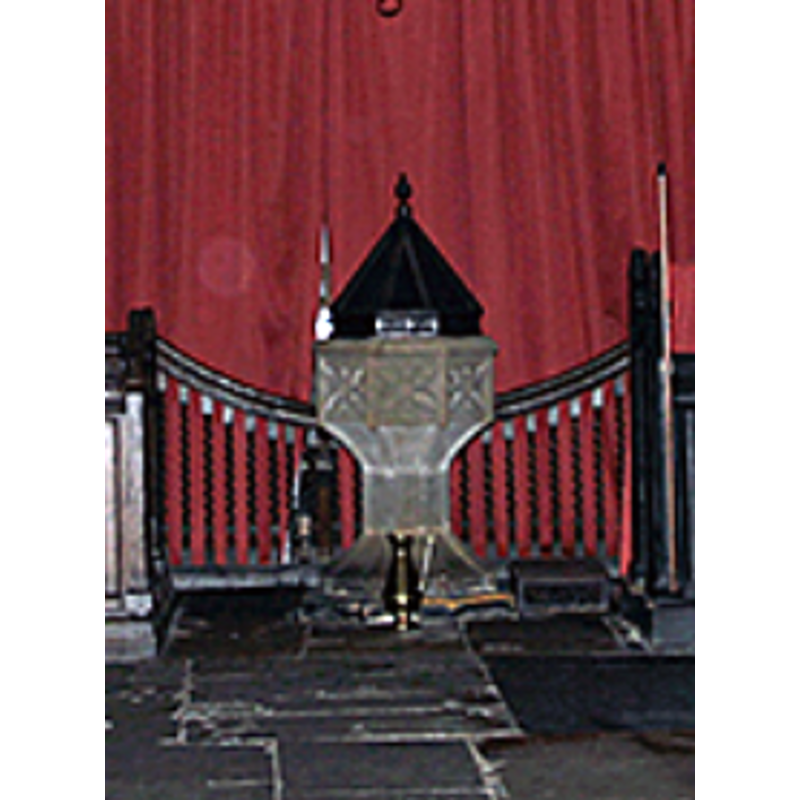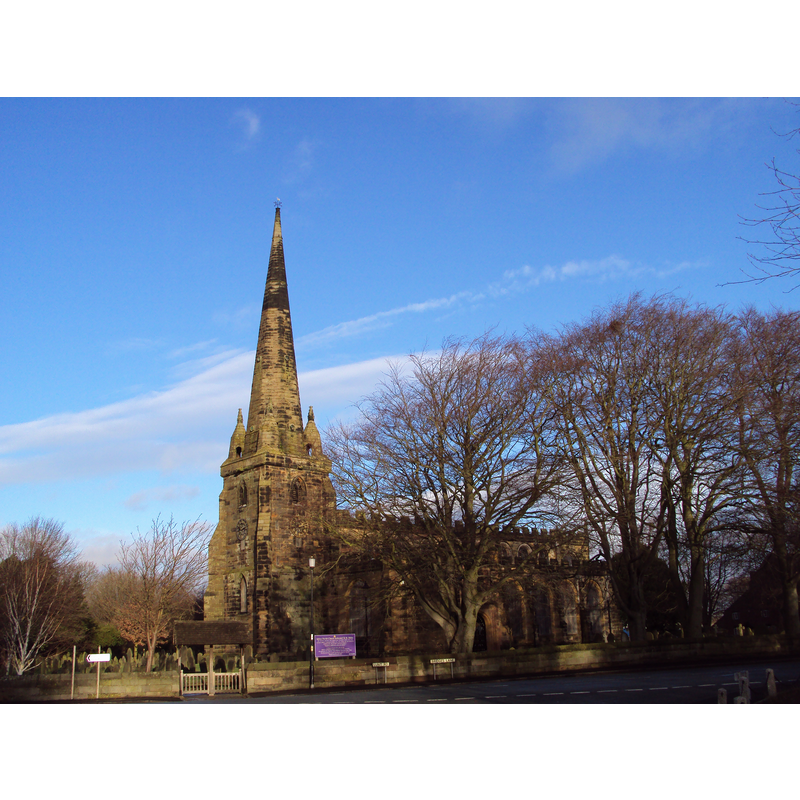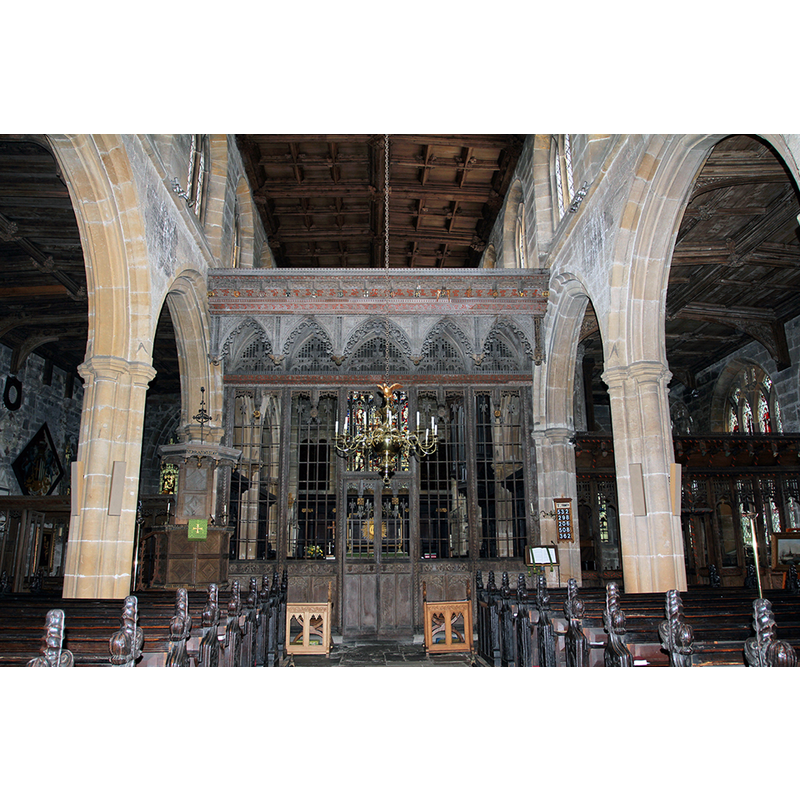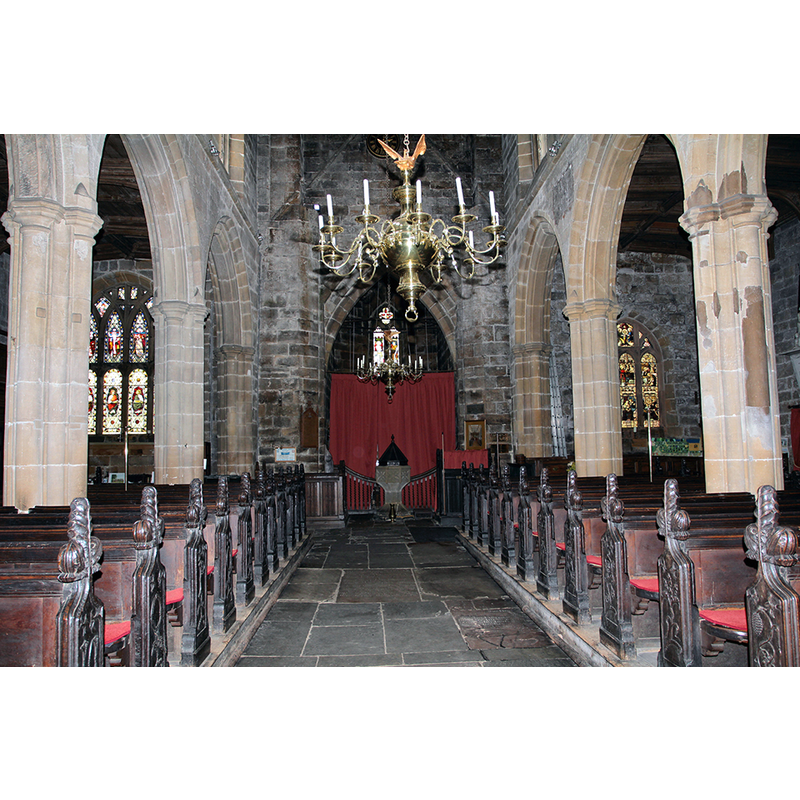Sefton / Ceffton / Sephton / Sextone / Shefton

Image copyright © Craig Thornber, 2012
CC-BY-SA-3.0
Results: 6 records
design element - motifs - hexafoil
symbol - shield - blank
Scene Description: [cf. Font notes]
Copyright Statement: Image copyright © Craig Thornber, 2012
Image Source: digital photograph taken 215 July 2012 by Craig Thornber [https://commons.wikimedia.org/wiki/File:St_Helen's_Church,_Sefton_-_nave_at_west.jpg] [accessed 26 February 2019]
Copyright Instructions: CC-BY-SA-3.0
view of church exterior - southwest view
view of church interior - looking east
view of church interior - nave - looking west
Scene Description: with the font and cover at the far end
Copyright Statement: Image copyright © Craig Thornber, 2012
Image Source: digital photograph taken 215 July 2012 by Craig Thornber [https://commons.wikimedia.org/wiki/File:St_Helen's_Church,_Sefton_-_rood_screen.jpg] [accessed 26 February 2019]
Copyright Instructions: CC-BY-SA-3.0
view of font and cover
INFORMATION
FontID: 01560SEF
Object Type: Baptismal Font1
Church/Chapel: Parish Church of St. Helen
Church Patron Saints: St. Helena
Church Location: Lunt Rd, Sefton, Liverpool L29 7WG, UK
Country Name: England
Location: Merseyside, North West
Directions to Site: Located on the B5422, now in the NW suburbs of Liverpool
Ecclesiastic Region: Diocese of Liverpool
Historical Region: formerly in Lancashire -- Hundred of West Derby
Font Location in Church: Inside the church, beneath the tower
Century and Period: 15th century (late?), Perpendicular
Workshop/Group/Artisan: heraldic font
Cognate Fonts: the basin at Standish (form. Lancashire, now Greater Manchester)
Church Notes: chapel here probably late-12thC; the CRSBI entry suggests date ca. 1200 for the earliest remnants; documented in 1291 valuation; re-built 1320, with many later modifications;
Font Notes:
Click to view
There is an entry for Sefton [variant spelling] in the Domesday survey [http://domesdaymap.co.uk/place/SD3501/sefton/] [accessed 25 June 2014], but it mentions neither church nor cleric in it. The present font is noted in Bridgens (1835). Poole (1842) and Pugin (1843) refer to this font as "somewhat inelegant" [NB: Poole refers to Bridgens], Ellis (1902) makes reference to two earlier sources as to the state of this font and cover: the reverend G.W. Wall (Trans. Hist. Soc., 1895), who reported the wooden cover as having traces of colour and gilding, and an article in the Liverpool Daily Post ca. May 1901 that reported the carvings on the font covered by plaster. Ellis (ibid.) reports the date (1688) and the churchwardens' initial (R.R. ; H.M. ; C.W.) carved on the rim of the oak cover, and suggests a date for the font in the "late fifteenth or probably early sixteenth century". An entry for the church at Standish in the Transactions of the Historic Society of Lancashire and Cheshire (LV, 1905: 260) points out the great similarity of this basin with the one at Standish. The entry for this parish in the Victoria County History (Lancaster, vol. 3, 1907) notes: "The font stands under the west tower, and is of red sandstone, octagonal, with blank shields in sixfoils on each face and raised fillets on the angles of bowl, stem and base. It probably belongs to the end of the fifteenth century, and has a pyramidal oak cover inscribed R R : H M : C W. 1688." Listed in Cox (1907) as a baptismal font of the Perpendicular period/style. Bond (1908) does not mention the font but makes a reference to the font cover as a "notable Post-Reformation" example and gives the date for the cover as 1688. Noted in Pevsner (1969): "Font. Plain, octagonal, Perp[endicular], with quatrefoils. The font cover is dated 1688 but still Jacobean in type." The entry for this church in Historic England [Listing NGR: SD3568401296] notes: "Church. West tower and east bay of north chapel early C14. [...] Several monuments and 2 memorial brasses dating from late C13. [...] C15 font with cover dated 1688". The VCH [cf. supra] reports parts of the fabric of this church as 13th- and 14th-century, and the entry in the CRSBI (2019) ca. 1200, but we have no information on the font of that period here].
COORDINATES
Church Latitude & Longitude Decimal: 53.5044, -2.9712
Church Latitude & Longitude DMS: 53° 30′ 15.84″ N, 2° 58′ 16.32″ W
UTM: 30U 501910 5928384
MEDIUM AND MEASUREMENTS
Material: stone, sandstone (red)
Font Shape: octagonal (mounted)
Basin Interior Shape: round
Basin Exterior Shape: octagonal
Diameter (inside rim): 58.42 cm*
Basin Depth: 17.78 cm*
Basin Total Height: 38.1 cm*
Font Height (with Plinth): 114.3 cm*
Notes on Measurements: * [in inches in Ellis (1902: 62)]
INSCRIPTION
Inscription Language: Initials and numbers
Inscription Notes: initials of the donors?
Inscription Location: on the cover
Inscription Text: "RR : HM : CW. 1688"
Inscription Source: [cf. FontNotes]
LID INFORMATION
Date: 1688 / Post-Reformation cover
Material: wood, oak
Apparatus: no
Notes: [cf. FontNotes]
REFERENCES
Victoria County History [online], University of London, 1993-. Accessed: 2006-09-12 00:00:00. URL: https://www.british-history.ac.uk.
Bond, Francis, Fonts and Font Covers, London: Waterstone, 1985 c1908
Cox, John Charles, English Church Furniture, New York: E.P. Dutton & Co., 1907
Ellis, John W., "The Mediaeval Fonts of the Hundreds of West Derby and Wirral", LVIII (New series: XVII), Transactions of the Historic Society of Lancashire and Cheshire, 1902, pp. 59-80; p. 61-62
Pevsner, Nikolaus, Lancashire, Harmondsworth: Penguin Books, 1969
Poole, George Ayliffe, The Appropriate Character of Church Architecture, Leeds; London: T.W. Green; Rivington, Burns, and Houlston and Stoneman, 1842
Pugin, Augustus Northmore Welby, The Present State of Ecclesiastical Architecture in England, London: Charles Dolman, 1843


